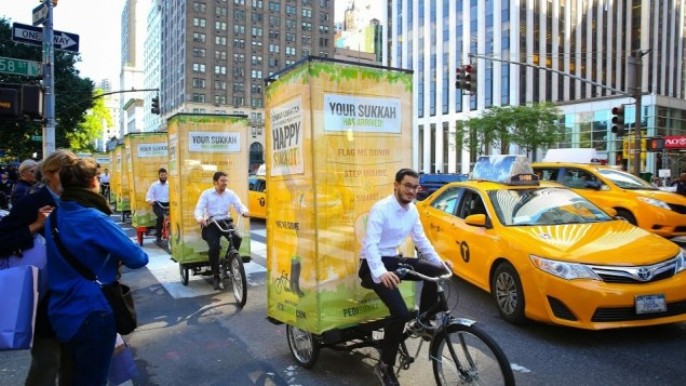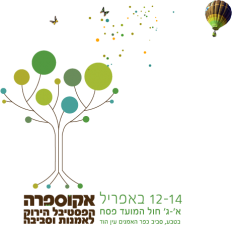 Jews in Israel will live for a week in a sukkah, starting next week. It’s a time to get back to nature, and one’s roots.
Jews in Israel will live for a week in a sukkah, starting next week. It’s a time to get back to nature, and one’s roots.
We’ve had a marathon of Israeli holidays the past while. There was Rosh Hashana, Yom Kippur, and next week the holiday Sukkoth. For the Jewish nation in Israel and around the world, there is probably no better time for them to reflect on one’s place in nature and the health of the environment than during Sukkoth, the Festival of Booths or the Jewish harvest festival.
If you are in Jerusalem or tel Aviv next week you’ll see small make-shift huts (sukkahs) being erected everywhere – each one with at least three walls made from wooden clapboard or cloth with a simple roof made from plant cuttings (skakh). It’s a time to remind Jews whether they are rich or poor that all this civilization that we’re accustomed to, a Jew should go back to nature to remind him of the basic things: where he came from.

Integral in this experience is the sukkah. The building of a sukkah is that it must have an uninterrupted view to the sky and stars (and you can decorate it with recycled items). All the week’s meals are to be eaten in the hut and some of the more hardcore types sleep in it as well. There is a host of elaborate customs during Sukkoth (also spelled Succoth) which involve waving plants and blessings on a strange aromatic fruit (etrog) from the citrus family (here’s a great etrog recipe), as well as a mitvah (commandment) for people to travel and explore the land.
From the time of the wandering Jew

What we like most of all about Sukkoth, is that it is a leveller. Rich or poor, young or old, it is a time when people cast aside their worldly possessions and take life’s speed down a notch or two (inside their hut). It is also about living among nature, not as a conqueror but as an equal to other creatures.
There are many different interpretations about the spiritual meaning behind Sukkoth – and one we like is that it teaches that existence is fleeting and momentary. We think that a little bit of reflection on the environment can go a long way around this time. Hey, and if you build a sukkah and are not storing the skakh for next year, don’t forget to compost it. We also hear that etrog makes a fabulous jam.
More on having a sustainable Sukkoth:
Make Etrog Jam (Beware of Toxic Etrog)
Recycled Decorations for Your Succah
Theme Park and Design Studio Go Green On Succoth




See Sukkot from Around the World — and Add a Picture of Your Own
by aaronginsburg / September 15, 2010
Sukkahsoftheworld.org is a website devoted to pictures of sukkot throughout the world.
Please contact me at [email protected] if you have any questions. Pictures should be taken this year, and may include both exterior and interior shots, hopefully including people. If you have a story about your sukkah, so much the better. A wandering photographer is also needed. The photographer should be a people person. The best times to take picture will probably be the day after Yom Kippur, Erev Sukkot, and Sunday during Hol Hamoed. Here is more information about how to submit.